Ever wondered just how dirty your old bath sponge and facial brush are?
We know how makeup tools can be a magnet for bacteria – imagine how much worse it is for facial cleansing devices and bath accessories that you store in a humid place. A dermatologist offers some tips to keep things clean.
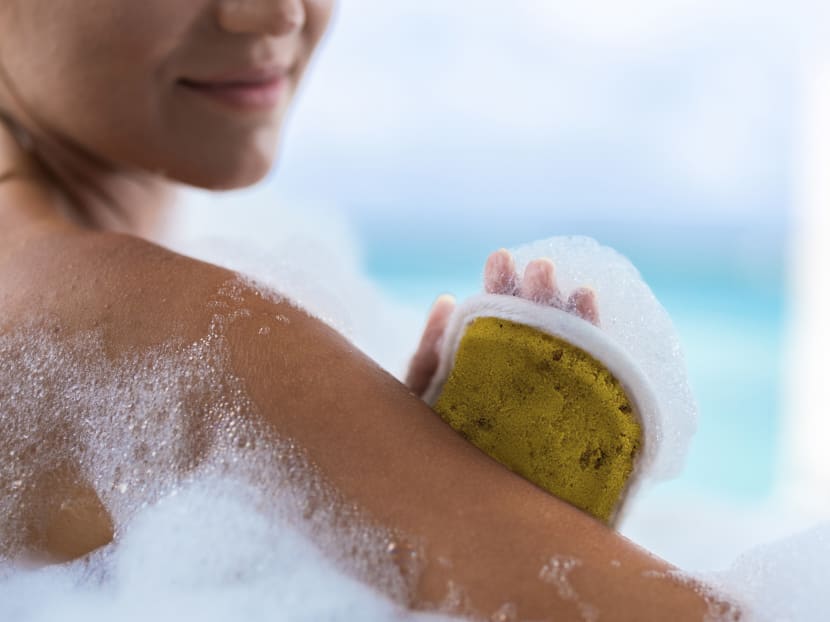
(Photo: iStock)
Many of us keep an entire arsenal of beauty essentials in our bathroom. Besides skincare and body-care products, these also include tools such as your electronic facial-cleansing device or brush, or perhaps a washcloth and a sponge or two.
You’re probably using them daily to keep your skin clean, but have you ever considered how clean these tools and devices actually are, before applying them to your face and body?
As we all know, microbes thrive in a warm, moist environment, which is the exact condition that exists in most bathrooms.
It could be worse, should your bathroom not have any windows – mould may grow on damp surfaces, and these include those on your sponges, towels and cleansing devices.
Dr Kok Wai Leong, a dermatologist at DS Skin & Wellness Clinic, explained that bathrooms can indeed be a breeding ground for micro-organisms like bacteria, fungi and even viruses.
“This is primarily due to the humid environment, lack of ventilation, as well as the sources for physical contamination. These factors contribute to the accelerated growth of microbes,” he said.
Mould may grow on damp surfaces, and these include those on your sponges, towels and cleansing devices.
While not a lot has been said or written about the cleanliness of cleansing devices stored in the bathroom, much has been revealed about bacteria found on makeup tools.
“There has been prior laboratory research showing that used makeup brushes and sponges contain significant amounts of bacteria. This may be a result of inadequate washing, improper sanitisation or incomplete drying before storage,” explained Dr Kok.
If this is true of makeup tools kept on top of your vanity or in its drawers, imagine how much more bacteria can breed on your cleansing tools that are in the bathroom, which provides microbes with a much more hospitable “home”.
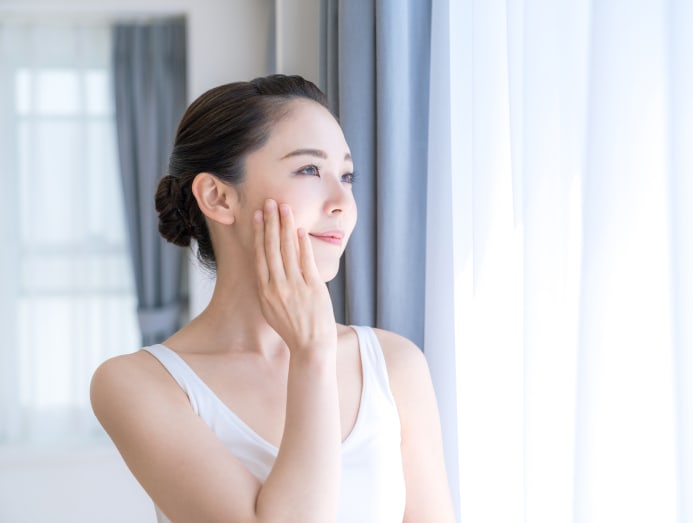
You might argue – so what if there is bacteria on these beauty tools? Doesn’t bacteria always exist on our skin, anyway?
“There are micro-organisms that naturally occur on the skin. The current understanding is that most of these skin microbes are harmless, and even play essential roles in maintaining skin health. However, in predisposed individuals with existing skin conditions or impaired immune systems, their presence may cause skin disease or flare-ups,” said Dr Kok.
He further explained that microbes from contaminated products or tools transferred to the skin can alter the balance of the resident micro-organisms. This disruption may lead to interactions that cause the development of skin inflammation.
This is bad news for those with skin problems. “Existing skin conditions may be aggravated, for example, in patients with skin sensitivity or eczema, where the skin barrier function is already compromised, or those with existing acne. The re-introduction of residual oil and bacteria from the applicator to the face causes flares of eczema, infections or may worsen acne,” he said.
So, if you are thinking about introducing one of these tools into your skincare or body-care routine, know that it will also require you to invest some effort into keeping them sanitary.
Here’s what you should know about cleaning them thoroughly so that they are safe for use on your skin.
ELECTRONIC SKINCARE DEVICES
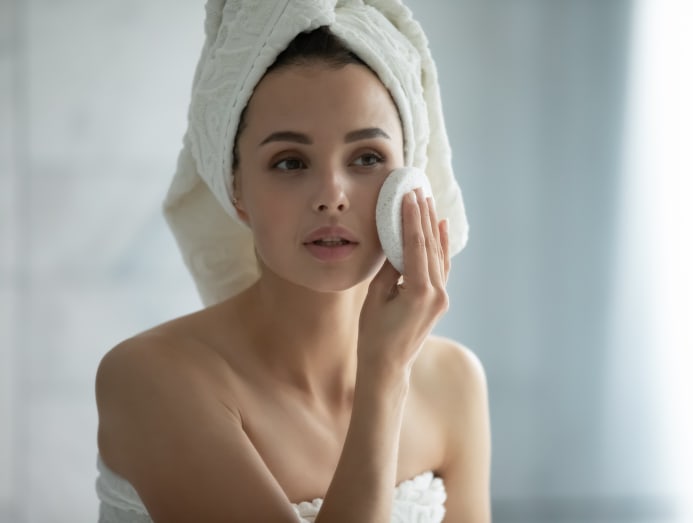
Devices such as facial-cleansing brushes are designed to last for a long time, subject to the frequency and conditions of use. However, these need to be cleaned from time to time to ensure that they remain hygienic for use.
Some brands that utilise silicone bristles in their product claim that the material is bacteria-resistant. But Dr Kok is of the opinion that the protective effect against bacteria remains controversial.
“While there have been some studies showing that polymer coating or silicone material have anti-microbial effects, it is also widely reported that bacteria may still colonise these surfaces with time. It is important to note that such effects also may not be long-lasting and the tool will require replacement after prolonged use. I would emphasise the need for proper cleansing to prevent contamination,” he said.
Which is why it’s a good idea to wash the bristles, no matter if they are made from nylon or silicone, with a gentle-formula soap and water – once a week if you’re using it daily or every two weeks or so if you are using it less frequently.
Nylon bristles tend to wear out after a period of use and may harbour more bacteria when they are worn out.
Also note that nylon bristles tend to wear out after a period of use and may harbour more bacteria when they are worn out. Such devices typically come with brush heads that can removed and replaced – follow the advice or instructions provided with your device and replace the brush heads according to the time period specified.
Most importantly, do not leave your cleansing device in a dripping-wet state on the bathroom counter after use, as the moisture will encourage the growth of bacteria and mould. It’s best to leave it a well-ventilated area to dry thoroughly before the next use.
FACIAL MUSLINS AND WASHCLOTHS
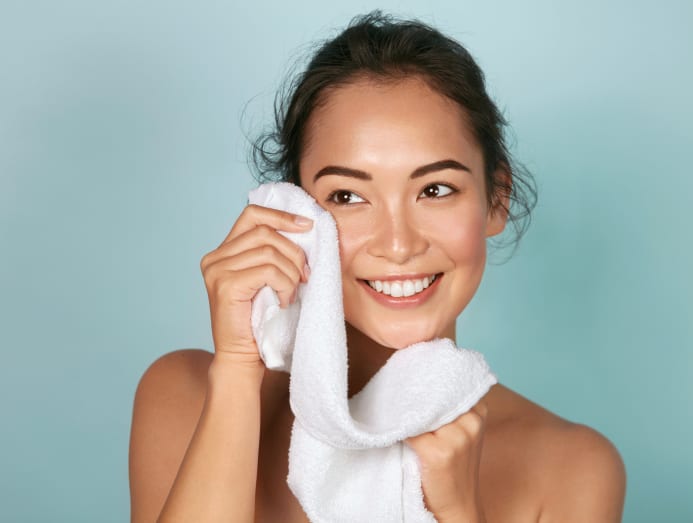
Most people typically use a washcloth to massage their skin after applying facial cleanser, or they use it to wipe off the cleanser along with any makeup residue. Does that mean that the cloth remains clean after use, since it’s already “soaped” while you were using it with your facial cleanser?
No, because dirt from your face and makeup residue can actually stick to the washcloth after use. It’s best to wash your face cloth with gentle-formula soap and water after every use to remove dirt from the fibre. If you are using the cloth with an emollient cleansing balm, you’ll need to clean it even more thoroughly to remove any traces of oil left from the product. Hang it up in a well-ventilated area to dry completely before the next use.
Dirt from your face and makeup residue can actually adhere to the washcloth after use.
Instead of repeatedly using just one washcloth day after day, it’s a good idea to buy multiple pieces so that you can use them on a rotational basis. This will also allow enough time for you to wash and dry each one thoroughly before they go back into storage.
Every now and then, give all your wash cloths a deep cleansing by soaking these in a mixture of warm water and laundry detergent (use one for delicates if you have it) for about 15 minutes before rinsing them out.
Don’t hold on to your washcloths if they have become stiff and stained, and are no better even after a thorough scrub and wash – it’s definitely high time to throw them out and buy some new ones.
LOOFAHS, BATH SPONGES AND SCRUBBING TOWELS
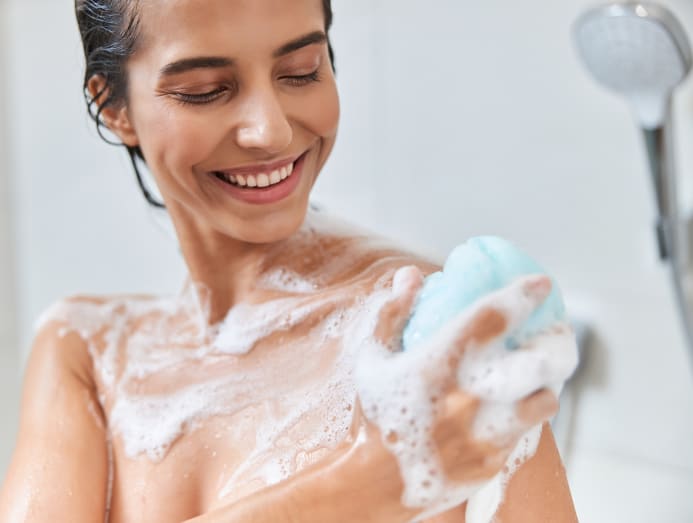
First up, we need to make it clear that the use of these bath accessories is not recommended. According to Dr Kok, sponges and scrubbing cloths may cause friction and micro-tears, especially when excessive force is applied to the skin of the body.
“These cuts and abrasions become a portal of entry for unwanted micro-organisms from contaminated applicators. Moreover, friction from these tools strips the skin of its barrier function, thereby doing more harm than perceived,” he explained.
Sponges and scrubbing cloths may cause friction and micro-tears, especially when excessive force is applied to the skin of the body.
This is why it is ever more crucial to keep your loofah, bath sponge or scrubbing towel sanitary, if you simply must use one of these in the bath or shower. Do not leave them to dry in the shower area – instead, take them out of the bathroom after each use and hang them up in a cool, ventilated place where they can air-dry completely.
Soak them every now and then in a warm solution of water mixed with some laundry detergent, then rinse them out and air-dry thoroughly. To use these bath accessories safely without harming skin, they will need to be replaced quite often – once a month if you are using them frequently.




